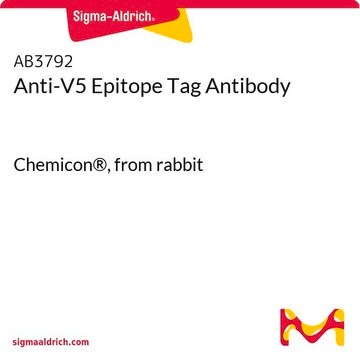SAE0203
Anti-V5 Magnetic Beads
Magnetic agarose, Suspension
Synonym(s):
Anti-V5 Tag antibody produced in mouse, V5 Antibody, V5 Tag Antibody, V5 epitope Tag
About This Item
Recommended Products
General description
Application
Features and Benefits
- Beads are prepared with an affinity-purified anti-V5 antibody.
- Monoclonal Anti-V5 antibody is produced by fusing mouse myeloma cells and splenocytes from a BALB/c mouse.
- Protein-to-bead ratio is approximately 2 mg/mL.
Storage Class Code
10 - Combustible liquids
WGK
WGK 3
Regulatory Listings
Regulatory Listings are mainly provided for chemical products. Only limited information can be provided here for non-chemical products. No entry means none of the components are listed. It is the user’s obligation to ensure the safe and legal use of the product.
JAN Code
SAE0203-1ML:
SAE0203-BULK:
SAE0203-VAR:
Certificates of Analysis (COA)
Search for Certificates of Analysis (COA) by entering the products Lot/Batch Number. Lot and Batch Numbers can be found on a product’s label following the words ‘Lot’ or ‘Batch’.
Already Own This Product?
Find documentation for the products that you have recently purchased in the Document Library.
Our team of scientists has experience in all areas of research including Life Science, Material Science, Chemical Synthesis, Chromatography, Analytical and many others.
Contact Technical Service








